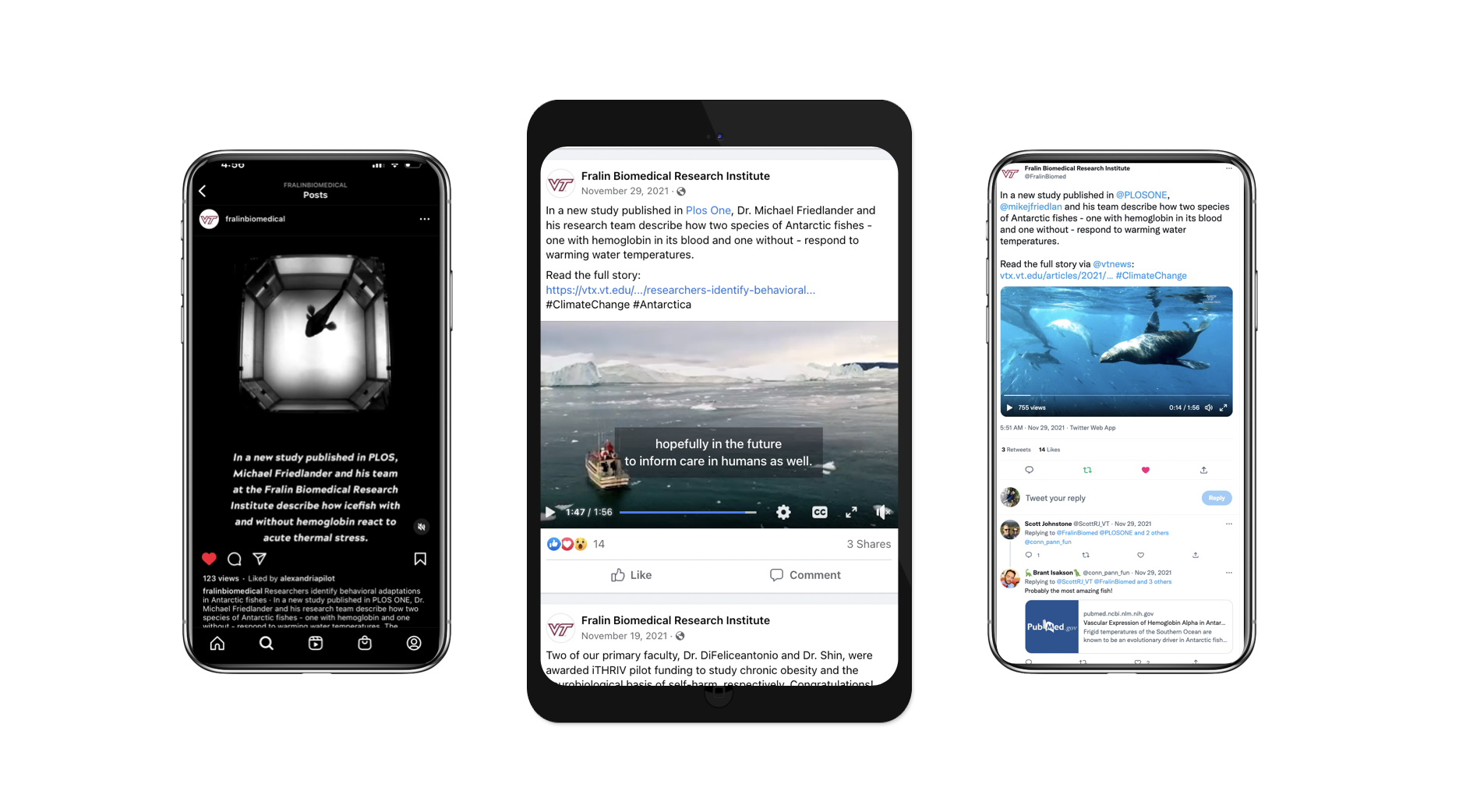PR Writing 101 + Example of a News Release Picked Up By The BBC
Maximize media exposure with these news story writing tips, plus an example of a news release that earned coverage across five continents, including primetime reporting on BBC Newshour
Date: 01/29/23 | Author: Whitney Slightham
Press releases serve as a key way to communicate news, updates, or events to the media, the public, and your target audiences. Great news releases provide a compelling narrative that draws attention to your news, generates coverage, and increases brand visibility.
Yet many marketers and business owners overthink their press release strategy or skip it altogether.
From research to distribution, here are five steps to writing a great news release. Plus, I’ve included an example of a news release that earned coverage across five continents and BBC Newshour pick-up.
Step 1: Research
Who? What? Where? When? Why?
Your news release should quickly address these questions within the first few sentences. Start your writing process by gathering these facts and then putting them in order of importance.
Once you’ve gathered some facts, it’s important to answer this question: why should I care? Your news release and media pitch will fall flat if you don’t have a strong impact statement. Put yourself in your target audience’s shoes. What’s in it for them? What’s your call to action? What makes your story newsworthy?
Next, hunt down sources to quote in your press release. If you can, identify a mix of internal and external sources. An example of a news release external source could be a subject matter expert who can objectively validate the impact of your organization’s news.
Step 2: Outlining
Take your facts and quotes and begin assembling them into a loose structure. Here’s an example of a news release outline to get you started:
News Release Header Content
- Your Brand: Whether you’re distributing a release via email or a newswire, have your logo files and brand information ready to go.
- Release Information: Is your news available ‘for immediate release’? Or is there an embargo date that you want journalists to respect?
- Date of Release: Your distribution date.
- Media Contact: Make sure your release header or footer includes your name, job title, email, and phone number.
News Release Body Content
- Headline: The most important eight-ish words you’ll write. Include pertinent facts and write your headline in the present tense.
- Subhead: A short sentence that supports your headline that adds key context.
- Dateline: The city where your news originated, followed by an em dash before the lead.
- Lede: As a general rule, you want to introduce the who, what, and when in your lede. Magazine articles or longer-form content may have longer exposition at the start to set a scene, whereas traditional press releases tend to cut to the chase.
- Nutshell Paragraph: Your nut graf explains your story in a nutshell. Think of this paragraph as the meat of your story. Many readers drop off within 15-30 seconds of reading, which is why you want to make sure your key facts are close to the top.
- Source Quote 1: Incorporate a top-level quote that adds perspective. Usually, the first quote in a press release comes from a high-ranking person in your organization who is close to the project. Never start their quote with “we are excited.” Trust me. Nothing is engaging about reading that phrase. Instead, focus on high-level impact. It’s not appropriate to stuff statistics and dense information into quotes – leave that for the body content.
- Body Paragraph: Follow up the first quote by introducing related facts to flesh out the story and add important details.
- Source Quote 2: If possible, add a different personal perspective from a second source. I like to use two to three quotes in most normal-length articles.
- Summary Paragraph: End your release with additional, lower-priority information.
News Release Footer Content
- Boiler Plate: Your boilerplate is a few sentences summarizing facts about your organization, including the date of incorporation, number of employees, headquarters location, and key services provided. Avoid using adjectives and adverbs in your boilerplate – it’s not an advertisement for your organization. Stick to the plain old facts.
- End Mark: Close your story with ###.
Step 3: Crank Out a Bad First Draft
Have you ever started a story and got hung up on the headline or lede? Stop. Wasting. Time.
Your story draft shouldn’t be perfect right out of the gate. That’s why many professional writers start with a bad first draft. Scratch out a loose outline, and start fleshing out the details based on the facts. Don’t get stuck refining your copy or waffling over fine details at this stage – just write.
It’s easier to make a vase when you have some clay on the wheel. Think of your bad first draft as a chunk of clay that you’ll mold into a masterpiece in the next step: relentless editing.
Step 4: Edit (And Then Edit Again)
It’s been 11 years since I sat for my final public relations writing exam for graduate school.
Each week, our media writing professor, PR veteran Kalene Morgan, gave us a challenging, one-hour assignment to prepare us for the lightning-fast production pace expected at leading agencies, like Ogilvy or Edelman.
She gave us a fact sheet and one hour to craft a fully laid out, polished news release. Each grad student started with 100% on the assignment, but every blunder – even a teeny style error or misplaced comma – docked us 30%. Make two mistakes, and you failed.
Professor Morgan was teaching us a valuable lesson about the importance of editing. You can be an incredible storyteller and a fast writer, but to be a successful communications professional, you must be able to churn out perfect, edited work. Every. Single. Time. Remember: once a news release is sent out into the ether, it’s out of your control and your mistakes are permanent.
I believe anybody can learn to become a great editor with some practice and diligence. Here’s my process for editing news releases:
- Read it aloud: Hearing my story out loud always helps me experience it as a reader would. At this stage, I’ll shuffle around paragraphs, swap out language, and make sure the story flows well. This is also an excellent opportunity to weed out spelling and grammatical errors. Is copyediting not your forté (yet)? Apps like Grammarly or Hemingway are effective tools that can help you strengthen your copy.
- Highlight and triple-check every proper noun: Comb through every source name, brand name, product name, and job title to make sure it’s factual and spelled correctly.
- Review for AP Style: Next, go through your story a third time and highlight any style components that you’re unsure about. The most common AP style mistakes are usually found in numbers, capitalization, punctuation, locations, and state names. Refer to the Associated Press Stylebook online for the latest guidelines.
- Polish: If you have access to a printer, print out your story to lift it off the screen and scratch out final changes with a pen. Something about reading a news release on paper makes it easier to identify lingering errors, especially when you’re tired of looking at your own copy. If printing isn’t an option, comb through your story one more time. Yes, it’s tedious. Yes, it’s often boring. But while perfection comes at a cost, errors sully your professional reputation. Take your time and do it right.
- Format: Once you’ve reviewed your story a few times, it should be ready for your boss’s review or distribution. As a final step, make sure you have all of the news release components you need, including journalist-friendly captioned media files and fact sheets if you have them.
Step 5: Distribution
Your news release distribution strategy will always depend on your target audience and the news itself.
Targeting readers in a specific geographic area? Find a list of reporters on local news websites and reach out to them directly. Write a quick pitch to entice them and attach your release. For good measure, shoot a personal pitch email to their newsroom and editorial team as well. Once I’ve worked with a reporter and built rapport, I usually skip the formalities and pitch them new story ideas via text or a brief email.
Targeting a broader audience? Tools like Cision or Press Hunt will save you a lot of time pulling worldwide media contact information and exporting tailored media lists based on locations, beats, or audiences.
Want to amplify your story? Use a newswire. This is more of a scattershot approach, but it will certainly extend your media reach. Cision PR Newswire delivers releases across 170 countries, 300,000 outlets, and 1.7 million journalists and media influencers. Pushing your release via EIN Presswire, Newswire, Presswire, or Linking News will help syndicate your story automatically across media outlets nationwide. With these paid content syndication platforms, news outlets will usually copy and paste your release verbatim – all the more reason to make sure it is perfect the first time! EurekAlert! is another newswire I use often in health sciences and biotech PR to reach science journalists and scientific publications.
Targeting a niche industry? One of the best ways to build a targeted media list is to consume a lot of news in the field you’re targeting. Scour trade magazines, news sites, and blogs to seek out great writers who focus on your industry. Some writers work full time for their publication, while others freelance. In either case, they’ll often need to run your pitch up the flagpole to get story approval before agreeing to any coverage.
Example of a News Release Picked Up By the BBC
Here’s my favorite science story that I’ve written. It was picked up by BBC Newshour and my VP at Virginia Tech got 5 minutes of continuous live, international coverage. The piece was also featured in media outlets across North America, Asia, Australia, Europe, and South America.
For this particular story, I interviewed four sources to lend the story credibility and color:
- Michael Friedlander, Ph.D., the study’s principal investigator.
- George Somero, Ph.D., a Stanford scientist, and subject matter expert who was not involved in the study.
- Iskander Ismailov, Ph.D., the study’s first author who worked on the project in Antarctica.
- Jordan Scharping, M.D., a researcher who worked on the project in Antarctica.
Clayton Metz on my team also produced video content for multiple digital platforms, which we distributed with the release:
Read this example of a news release on Virginia Tech’s website. For more examples of news releases, content, and bylines, check out my writing portfolio.
Website content should never be an afterthought.
At Mesa, we’re experienced, versatile, and have a proven track record of creating powerful WordPress websites that:
Author Profile: Whitney Slightham has custom-developed WordPress websites and led strategic communications initiatives for 13 years. Her digital marketing and public relations campaigns have earned 11 national and international recognitions. Slightham has a proven track record of driving revenue and elevating technical stories in prime media markets. Raised in Toronto, Canada, she now lives in Flagstaff, Arizona with her husband, son, and husky.





